Heroes and Anti-Heroes
20 Medusa

Origin
Sections & Primary Sources
The Gorgons
There are two mythological origin stories for Medusa. According to one version, she is one of three sisters, called the Gorgons (or Gorgones). These three were monsters, women with snakes for hair, that were born to Phorcus, a primordial sea god, who is depicted by the Romans as a merman, and his wife, Ceto, whose name means “sea monster.” Phorcus and Ceto were the parents of several monsters, including Echidna, the Graeae, and Ladon. Echidna, in turn, was the mother of many more monsters with her mate Typhon, including Orthrus, Cerberus, the Lernaean Hydra, the Sphinx, and the Nemean Lion. Medusa was mortal, but her two Gorgon sisters, Sthenno and Euryale, were immortal.
Hesiod, Theogony 270-294 (trans. H. G. Evelyn-White, adapted by P. Rogak)
Greek epic poem, 8th/7th century BCE
[270-294] And to Phorcus, Ceto bore the Graeae, with fair faces and gray from birth. These the gods who are immortal and men who walk on the earth call Graeae, the gray sisters, Pemphredo robed in beauty and Enyo robed in saffron, and the Gorgons who, beyond the famous stream of Ocean, live in the utmost place toward night, by the singing Hesperides. They are Sthenno, Euryale, and Medusa, whose fate is a sad one, for she was mortal, but the other two immortal and ageless both alike. Poseidon, he of the dark hair, lay with one of these, in a soft meadow and among spring flowers. But when Perseus had cut off the head of Medusa, there sprang from her blood great Chrysaor and the horse Pegasus so named from the springs (pegai) of Ocean, where she was born.
Taken from: https://www.theoi.com/Text/HesiodTheogony.html
Athena, Poseidon, and Medusa
[content warning for the following section: sexual assault]
According to another version of Medusa’s myth, she was once a beautiful young woman who was raped by the god Poseidon in a temple of Athena. As retribution for the violation of the virgin goddess’ shrine, Athena caused Medusa to be turned into a gorgon and to join the other two gorgons living at the edge of the world. In a variation on this version of the myth, Athena turns Medusa into a gorgon not because she was raped by Poseidon, but because she claimed to be as beautiful as Athena.
Ovid, Metamorphoses, Book 4.790-803 (trans. A. S. Kline, adapted by P. Rogak)
Latin narrative poem, 1st century CE
[content warning for the following source: sexual assault]
[790-803] Next one of the many princes asked why Medusa, alone among her sisters, had snakes twining in her hair. The guest [ Perseus ] replied, “Since what you ask is worth the telling, hear the answer to your question. She was once most beautiful, and the jealous aspiration of many suitors. Of all her beauties none was more admired than her hair: I came across a man who recalled having seen her. They say that Neptune, lord of the seas, violated her in the temple of Minerva. Jupiter’s daughter turned away, and hid her chaste eyes behind her aegis. So that it might not go unpunished, she changed the Gorgon’s hair to foul snakes. And now, to terrify her enemies, numbing them with fear, the goddess wears the snakes, that she created, as a breastplate.”
Taken from: https://www.poetryintranslation.com/PITBR/Latin/Metamorph4.php#anchor_Toc64106272
Translated by A. S. Kline © Copyright 2000 All Rights Reserved
Conflict and Death

Medusa was killed by the Greek hero Perseus. He was sent to kill her by King Polydectes of Seriphos, under the assumption that he would fail, leaving nobody to object to Polydectes marrying Perseus’ mother, Danae. Assisted by Athena and Hermes, Perseus found Medusa in a cave and cut off her head, which Athena showed him using her reflective bronze shield as a mirror.
When Perseus cut off Medusa’s head, the winged horse Pegasus and the monster Chrysaor sprang from her bleeding neck. These were the offspring of Poseidon’s rape of Medusa.
For further discussion and art of Perseus and Medusa, see chapter 21.
Afterlife
Sections & Primary Sources
The Origin of Vipers
Perseus put Medusa’s severed head into a bag and flew away from the cave of the Gorgons on the winged horse Pegasus. As he was flying back to Polydectes on the Island of Seriphos, he flew over the Libyan desert. It is said that drops of blood from Medusa’s severed head fell onto the sand below and spawned poisonous vipers.
Apollonius of Rhodes, Argonautica (trans. R. C. Seaton, adapted by P. Rogak)
Greek Epic, 3rd century BCE
[1502] And then, on the same day, a pitiless fate seized Mopsus too, son of Ampycus; and he did not escape a bitter doom by his prophesying; for there is no way to escape death. Now there lay in the sand, avoiding the midday heat, a terrifying serpent, too sluggish of his own will to strike at an unwilling foe, nor yet would he dart full face at one that would shrink back. But into whatever of all living beings that life-giving earth sustains that serpent once injects his black venom, his path to Hades becomes not so much as a cubit’s length, not even if Paean, if it is right for me to say this openly, should tend him, when its teeth have only grazed the skin. For when godlike Perseus Eurymedon (for by that name his mother called him) flew over Libya — bearing to the king the Gorgon’s head newly severed, all the drops of dark blood that fell to the earth, produced a brood of those serpents. Now Mopsus stepped on the end of its spine, setting thereon the sole of his left foot; and it writhed round in pain and bit and tore the flesh between the shin and the muscles. And Medea and her handmaids fled in terror; but Canthus bravely felt the bleeding wound; for no excessive pain harassed him. Poor wretch! Already a numbness that loosed his limbs was stealing beneath his skin, and a thick mist was spreading over his eyes. Straightway his heavy limbs sank helplessly to the ground and he grew cold; and his comrades and the hero, Aeson‘s son, gathered round, marvelling at the close-coming doom. And, though dead, he could not lie beneath the sun even for a little time. For at once the poison began to rot his flesh within, and the hair decayed and fell from the skin. And quickly and in haste they dug a deep grave with pick-axe of bronze; and they tore their hair, the heroes and the maidens, bewailing the dead man’s piteous suffering; and when he had received due burial rites, thrice they marched round the tomb in full armour, and heaped above him a mound of earth.
Taken from: https://www.theoi.com/Text/ApolloniusRhodius4.html
The Origin of Coral
Perseus next came to Red Sea, where he saw the Libyan princess, Andromeda, chained to a rock, a sacrificial victim to the sea monster that had been ravaging the area. After he killed the sea monster and rescued Andromeda, he sat down to rest on the shores of the Red Sea. He set down the head of Medusa down on a bed of seaweed, which immediately hardened because of Medusa’s magical ability of petrification. This is the etiological myth (that is, the creation story) for the origin of coral.
Ovid, Metamorphoses, Book 4 (trans. A. S. Kline)
Latin narrative poem, 1st century CE
[706-752] Released from her chains, the girl [ Andromeda ] comes forward, the prize and the cause of his efforts. He [ Perseus ] washes his hands after the victory in seawater drawn for him and, so that Medusa’s head, covered with its snakes, is not bruised by the harsh sand. He makes the ground soft with leaves, spreads out plants from below the waves and places the head of that daughter of Phorcus on them. The fresh plants, still living inside, and absorbent, respond to the influence of the Gorgon’s head, and harden at its touch, acquiring a new rigidity in branches and fronds. And the ocean nymphs try out this wonder on more plants, and are delighted that the same thing happens at its touch, and repeat it by scattering the seeds from the plants through the waves. Even now corals have the same nature, hardening at a touch of air, and what was alive under the water, above water is turned to stone.
Taken from: https://www.poetryintranslation.com/PITBR/Latin/Metamorph4.php#anchor_Toc64106271
The Aegis
After completing his adventures, Perseus gave the head of Medusa to Athena as thanks for helping him. Athena wears Medusa’s head on a cloak that she pins around her shoulders. This garment, as well as Zeus’ shield, is called the Aegis. According to other versions of the myth, Athena also carries the gorgon’s head on her shield. Today, people use the term aegis to mean someone’s metaphorical sphere of influence or protection: e.g., doing something under someone’s aegis means you are doing so with their blessing or on their behalf.
Pseudo-Apollodorus, Bibliotheca, Book 2 (trans. K. Aldrich, adapted by P. Rogak)
Greek mythography, 2nd century CE
[2.4.3] [Perseus gave] the Gorgon’s head to Athena [. . .]Athena placed the Gorgon’s head in the center of her shield. It is affirmed by some that Medusa was beheaded because of Athena, for they say the Gorgon had been willing to be compared with Athena in beauty.
Taken from: https://www.theoi.com/Pontios/Gorgones.html
Art and Symbolism
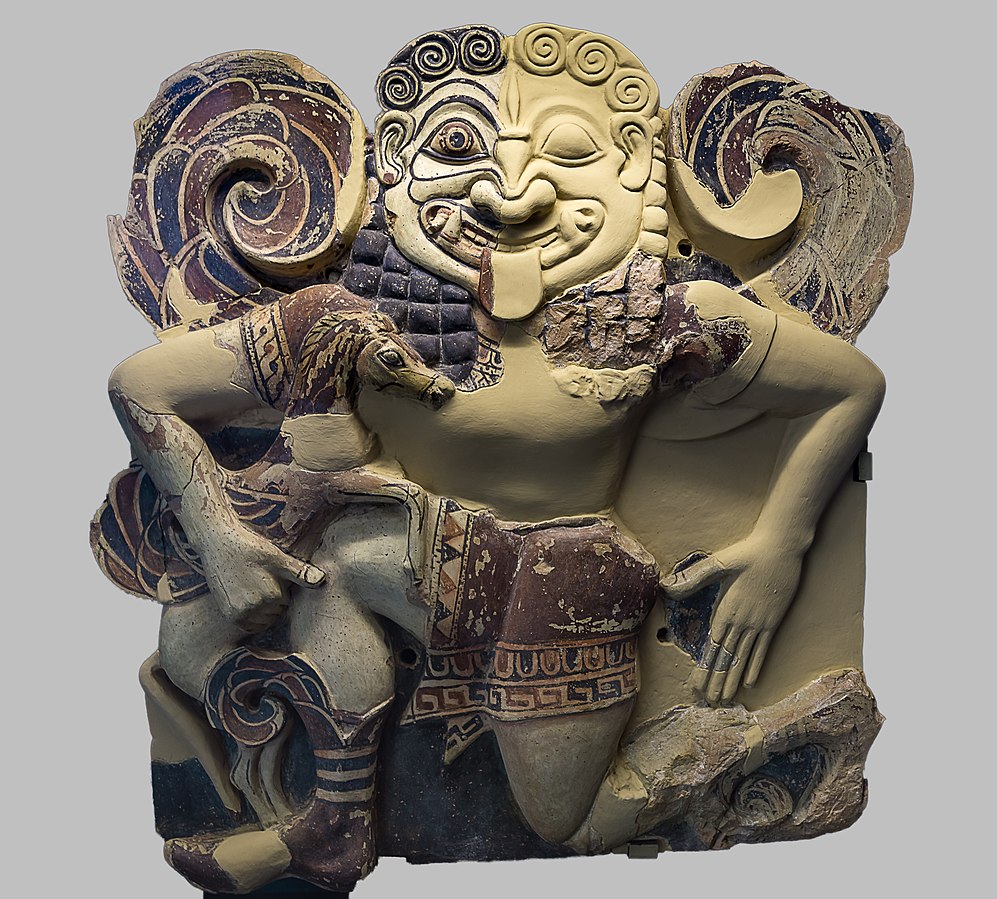
Medusa is one of the most popular and most easily recognizable figures in Greek art. She is typically portrayed as a female snake-haired monster with a large mouth showing animal fangs, as well as with a long tongue, wings, and sometimes a belt made of snakes. Her body is usually that of a woman, but in one of the earliest representations of the myth she is shown as a centaur. Even when her body is depicted sideways, her head is always shown as frontal, staring back at the spectator so as to turn them into stone.
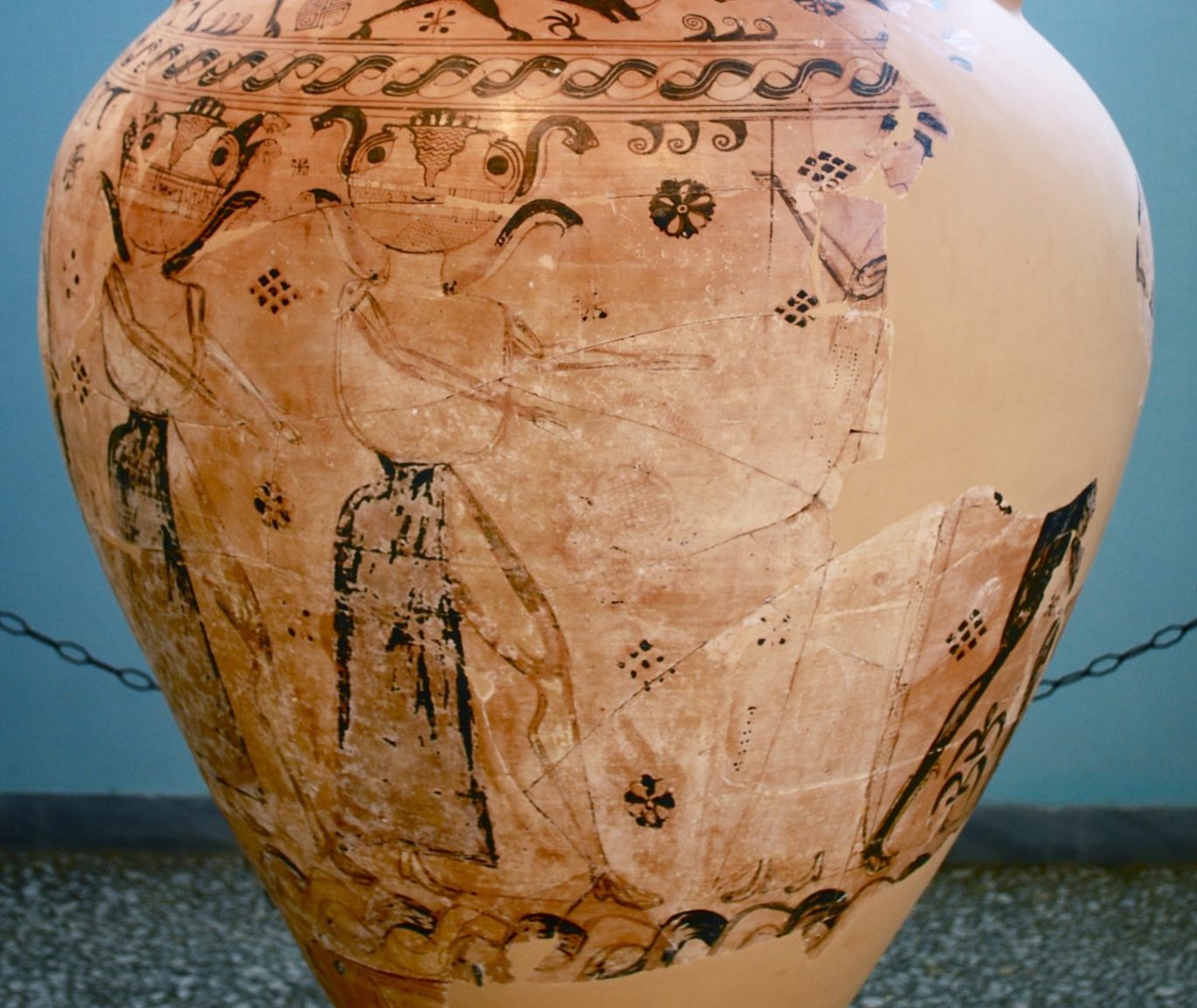
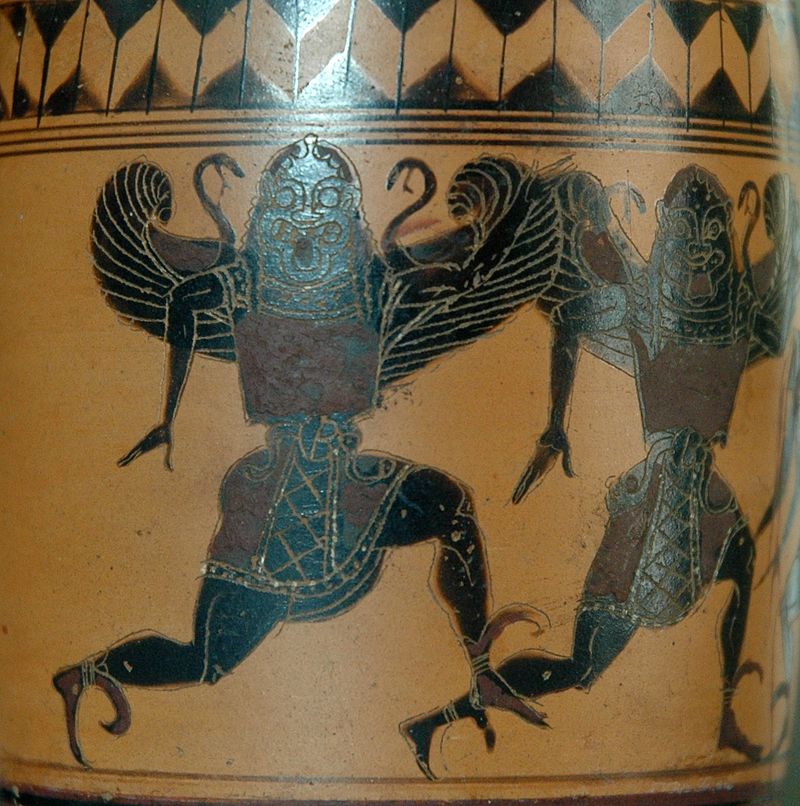
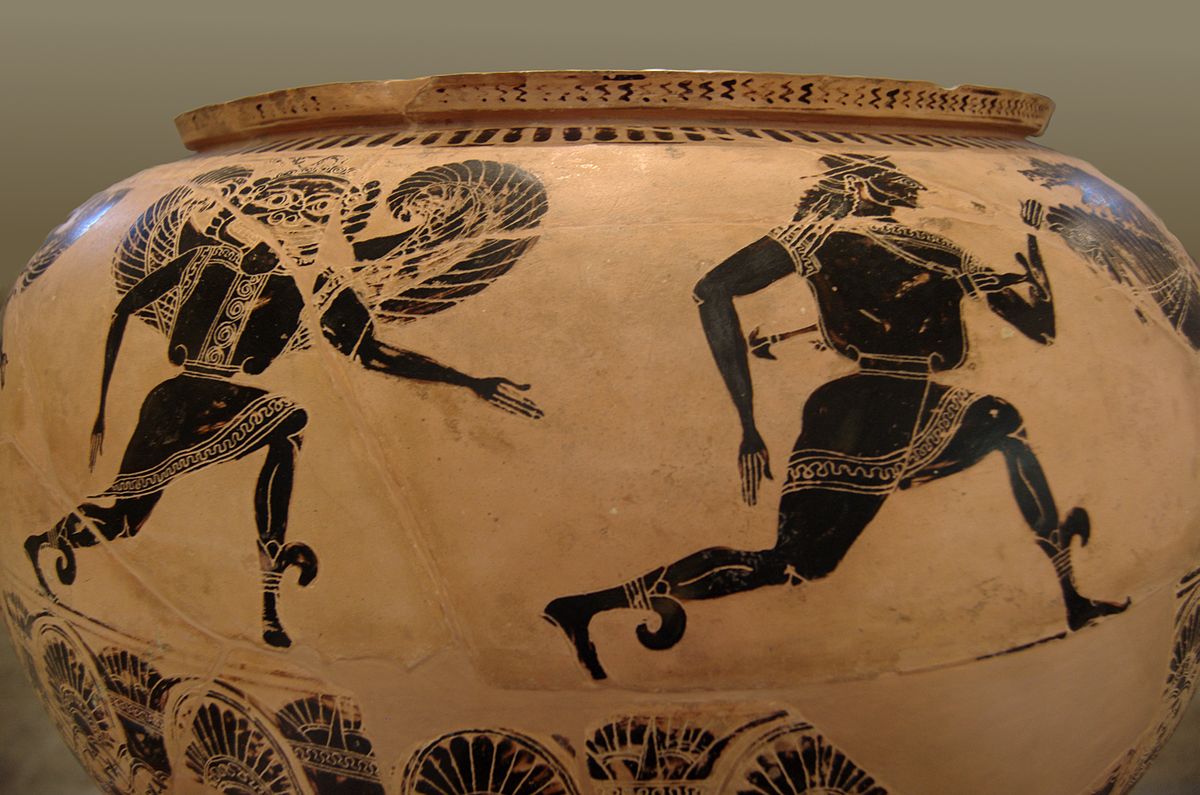
From the Classical Period, as artistic standards changed, Medusa stopped being represented as a grotesque monster. She was instead portrayed as a beautiful woman, while still maintaining some unsettling features such as frontality and snakes.
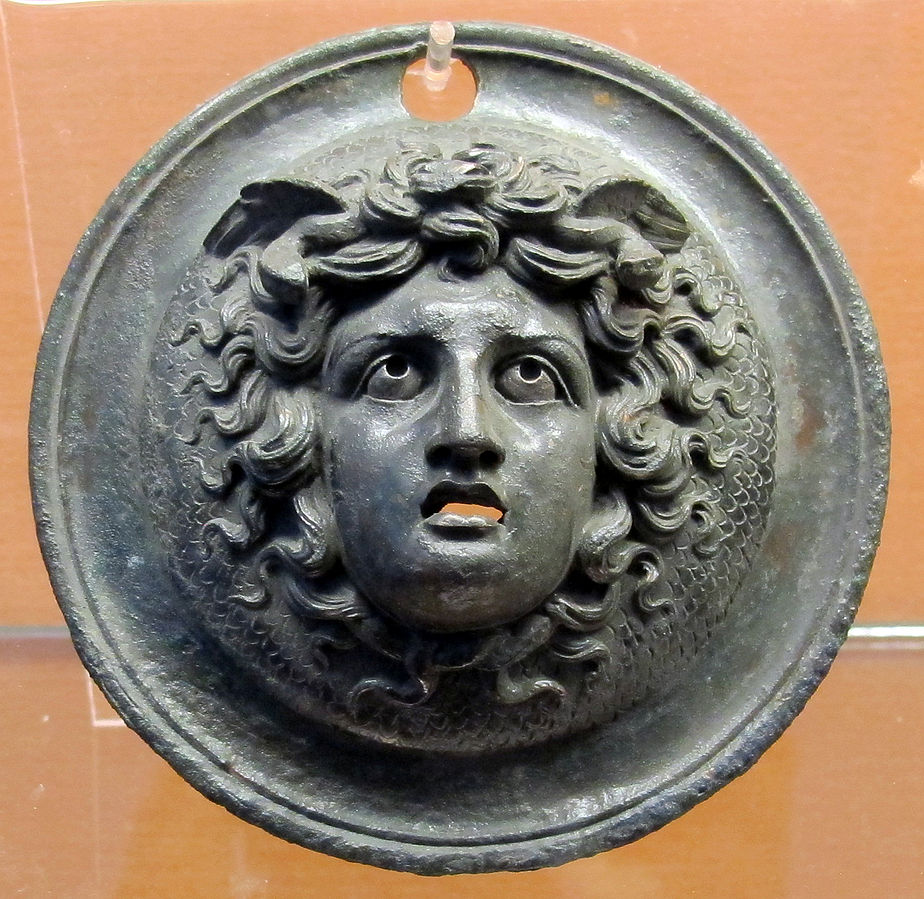

When not used as a decoration, Medusa was usually portrayed in art in the scene of her demise, where she is usually shown in the process of being slain by Perseus, who is averting his gaze.
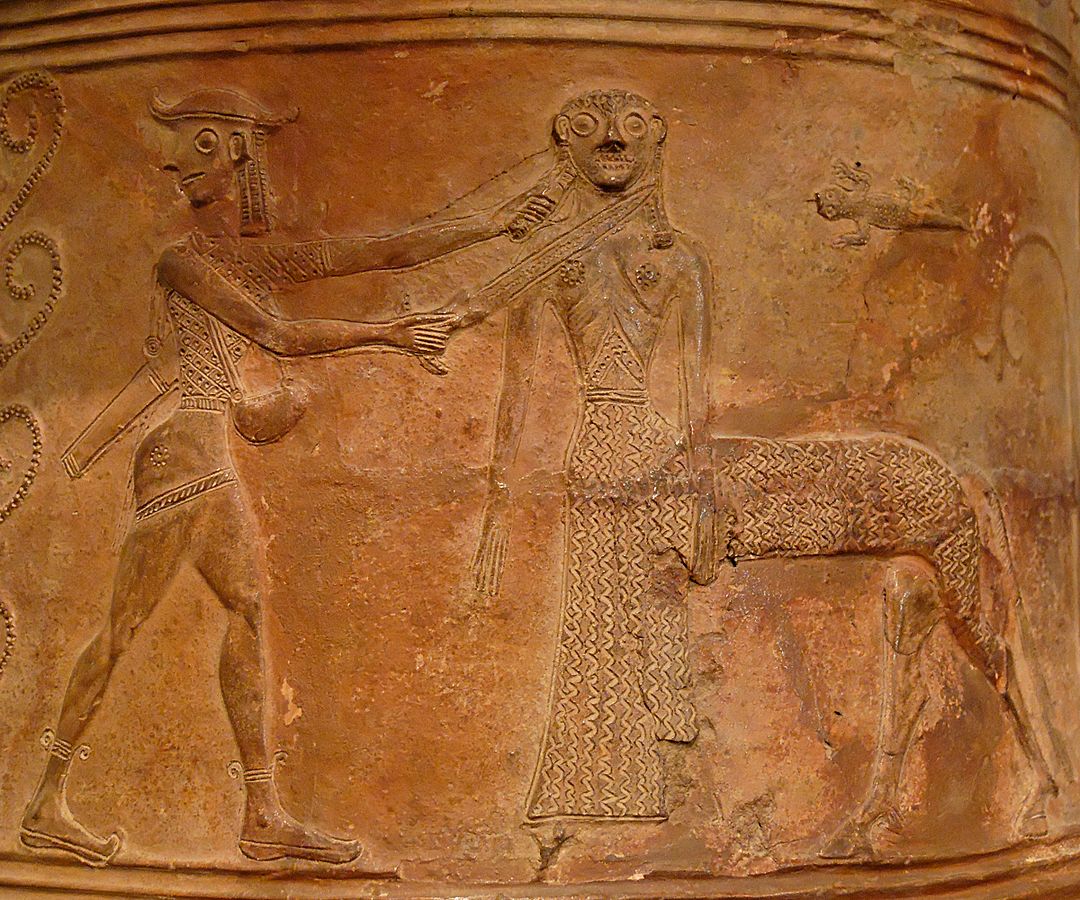
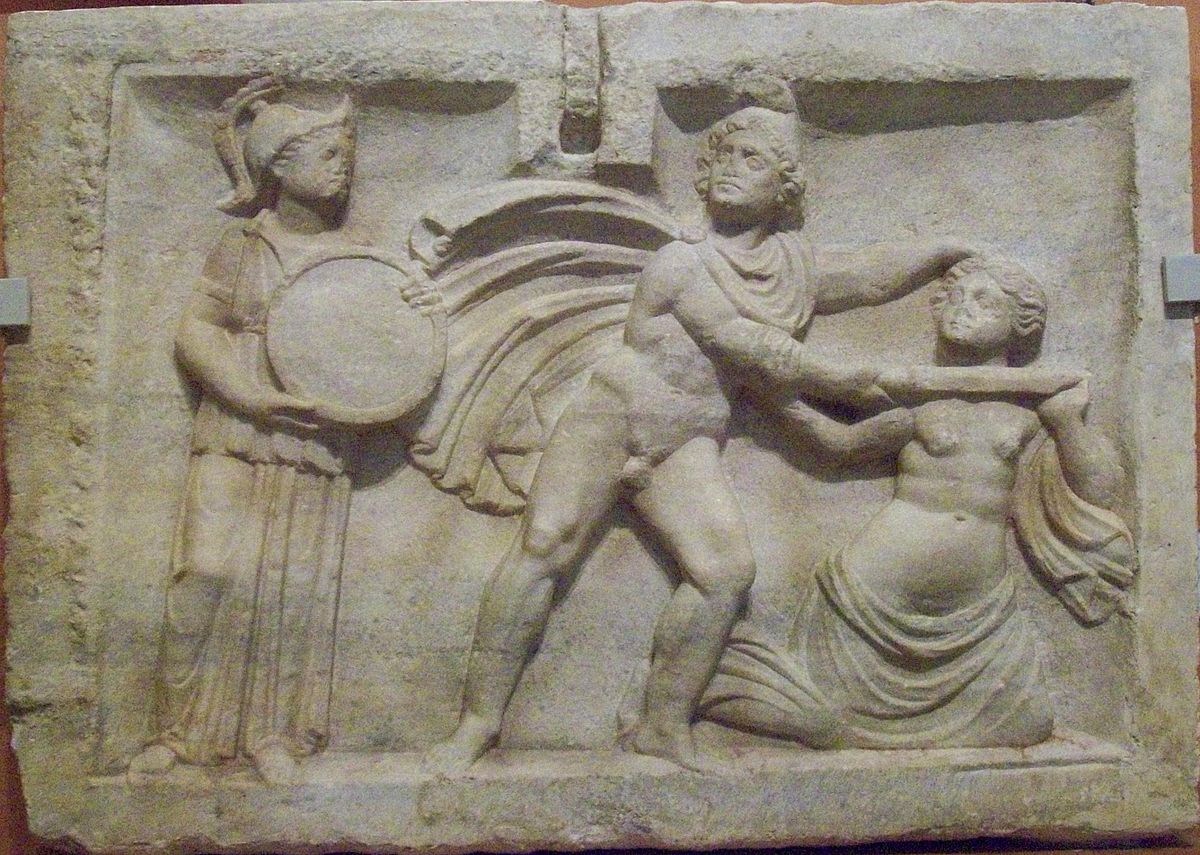
Another popular scene to depict was the moment immediately after her death, when Pegasus and the giant Chrysaor were born from Medusa’s decapitated body.
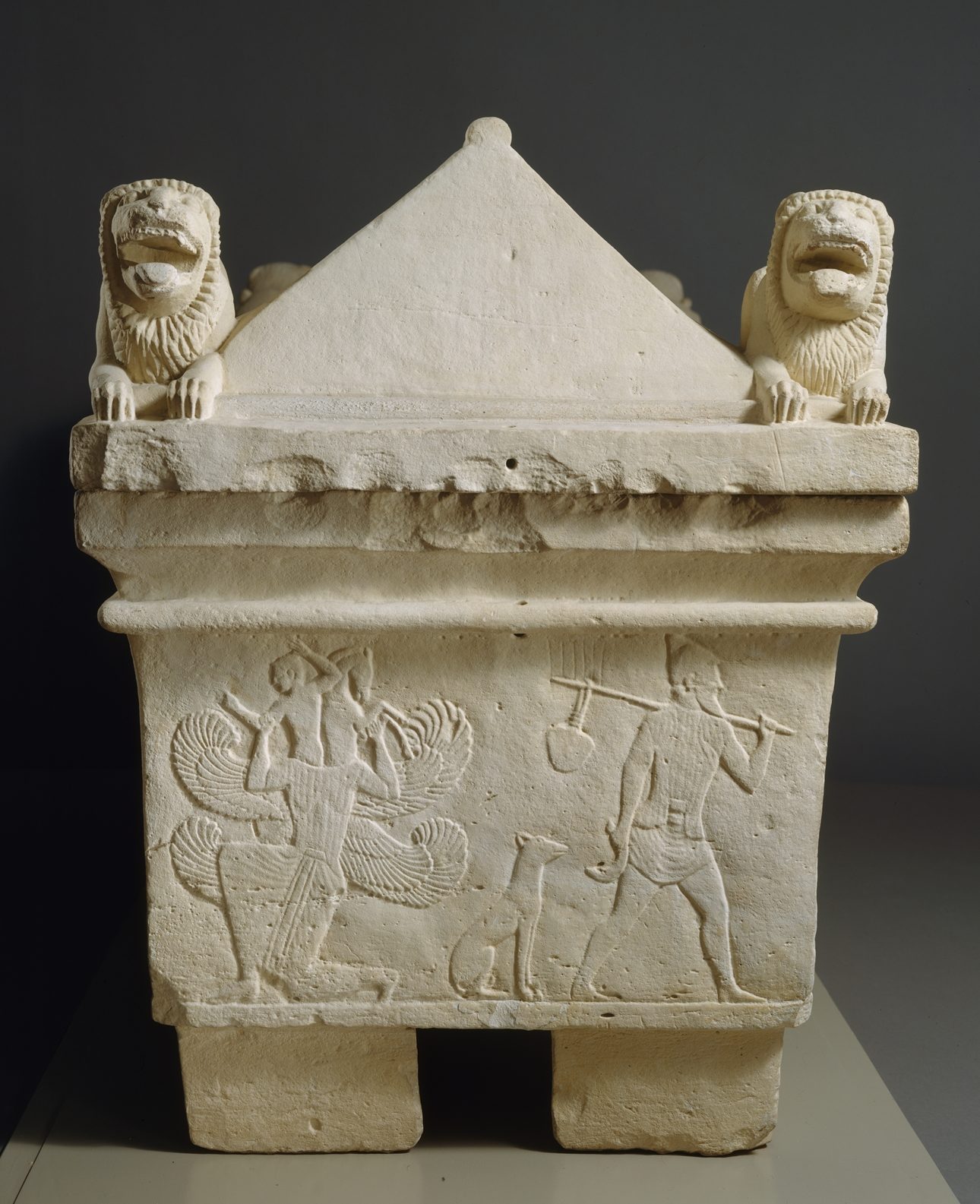
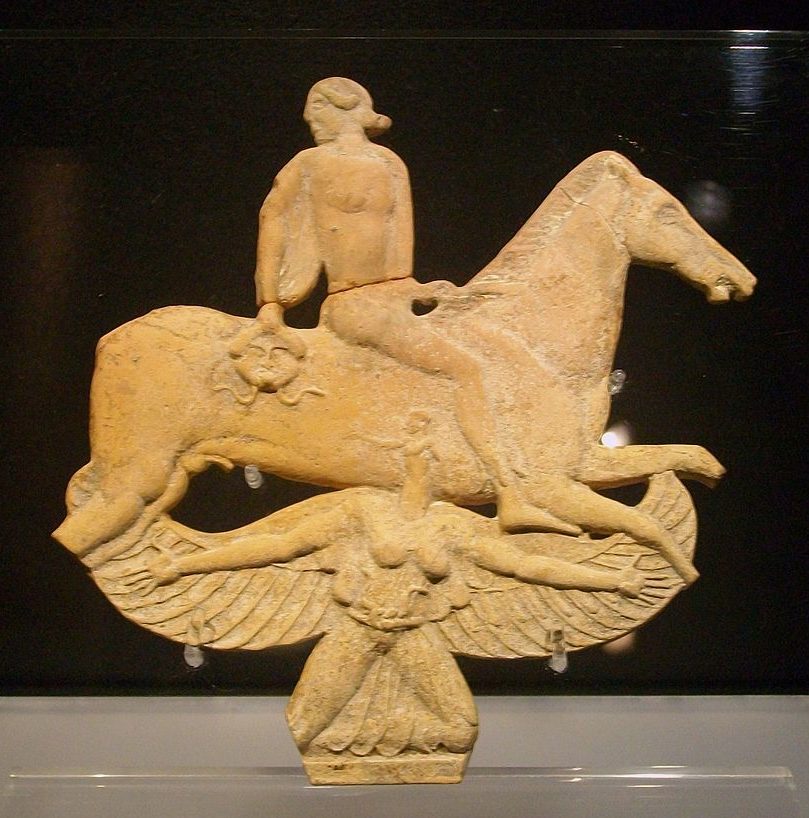

The severed head of Medusa, called the gorgoneion, was one of the most popular motifs in Greek art from the Archaic Period. It had a life on its own as a decoration or protective symbol on vessels, sculptures, architecture, jewels, and weapons.
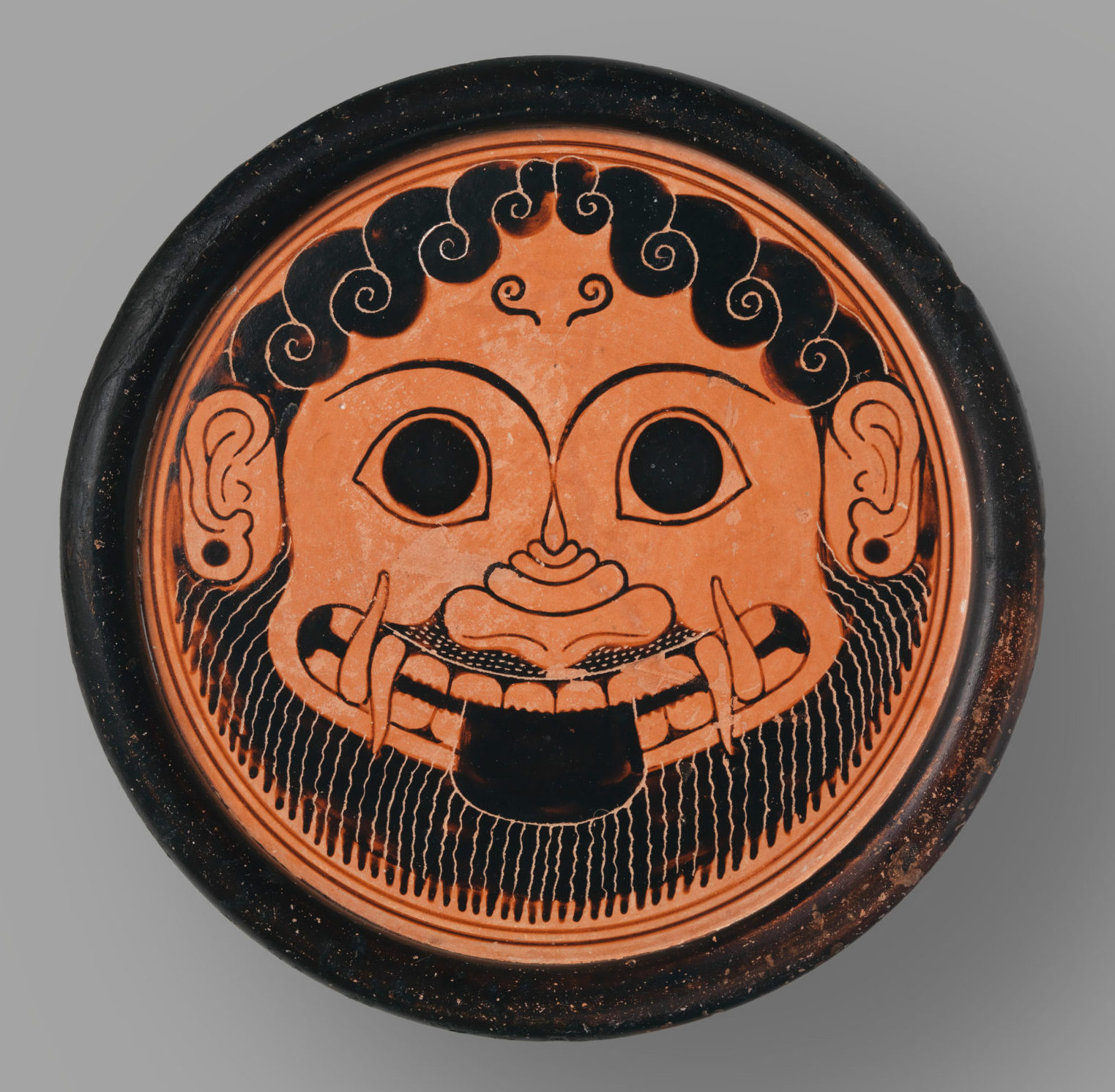
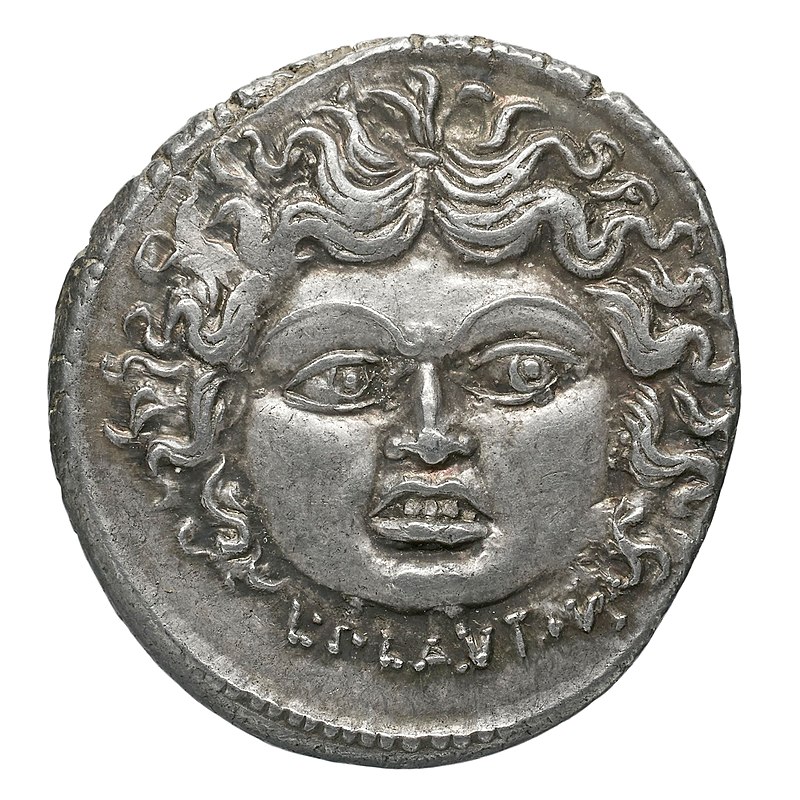
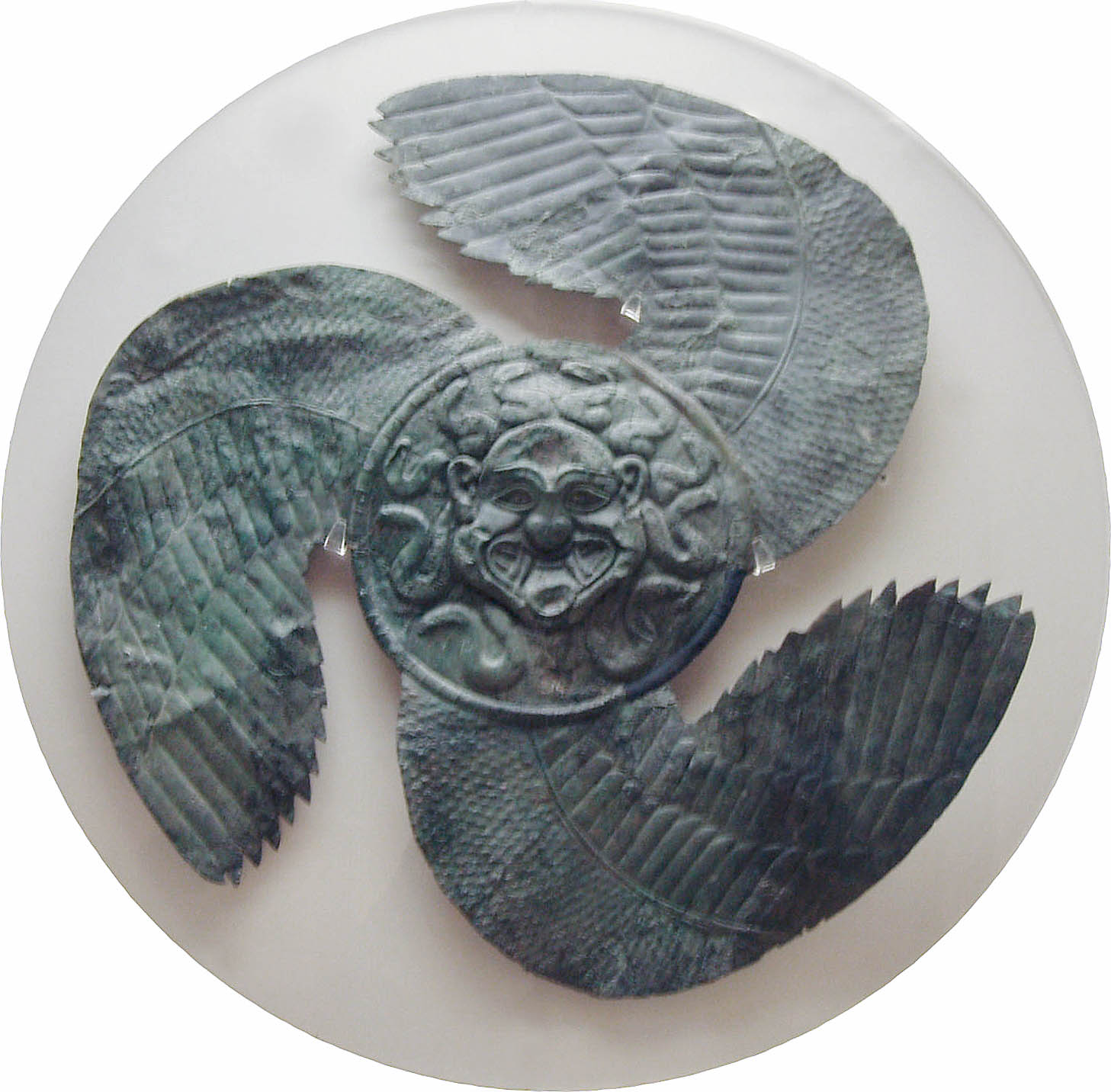
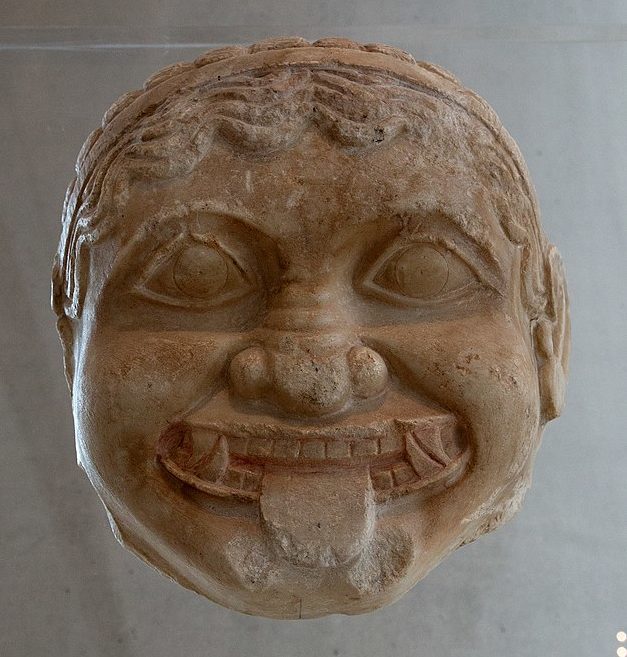
Most notably, the gorgoneion was also almost always depicted on the aegis, the cloak worn by goddess Athena. The attributes of the gorgoneion were very similar to those of Medusa herself: frontality, fangs, protruding tongue, snakes, and sometimes even a beard.
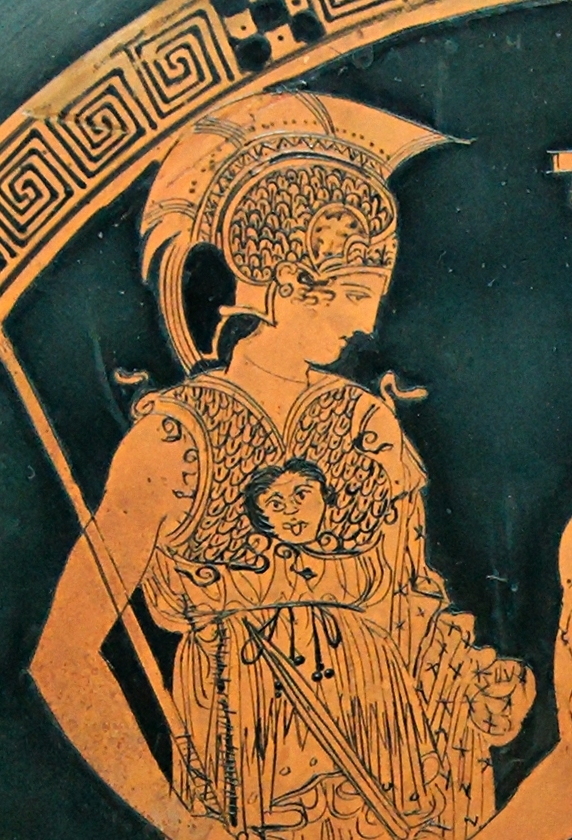
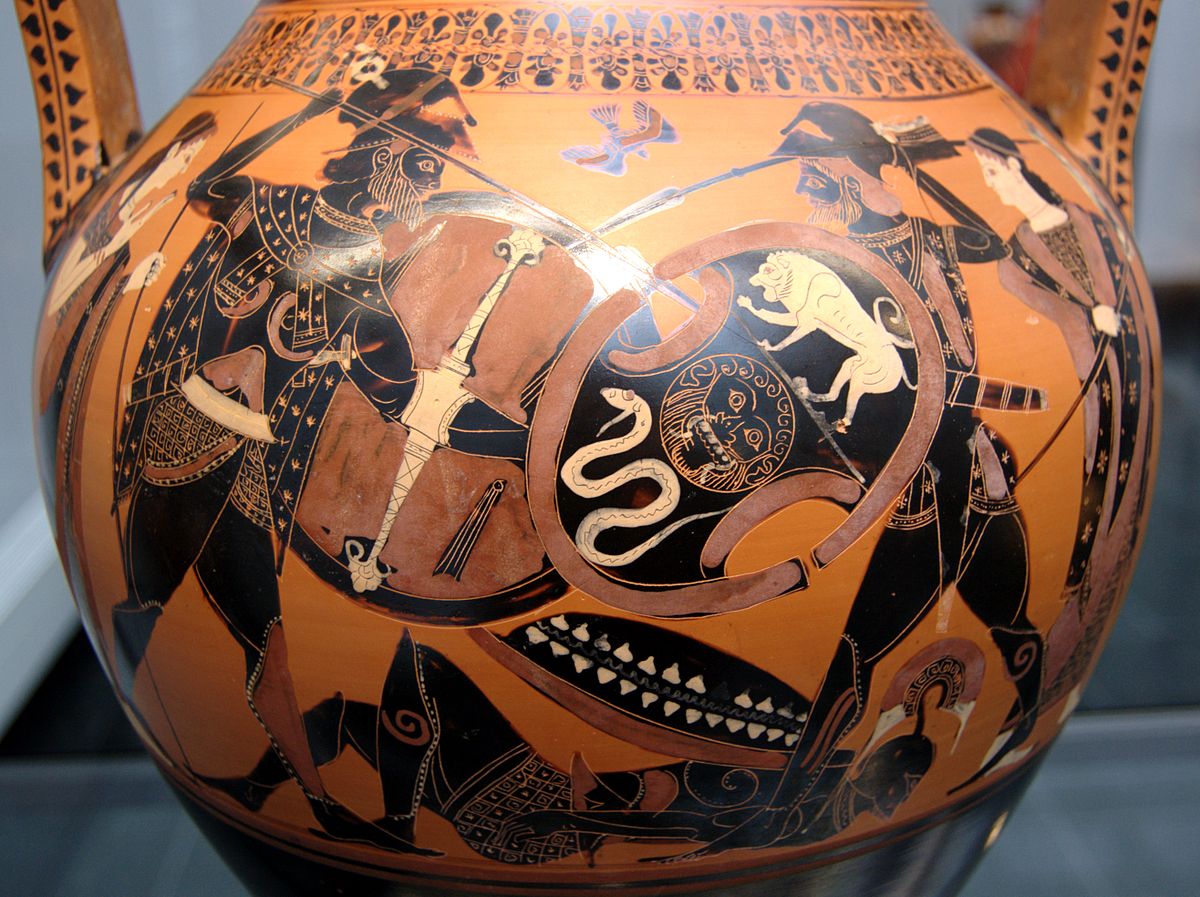
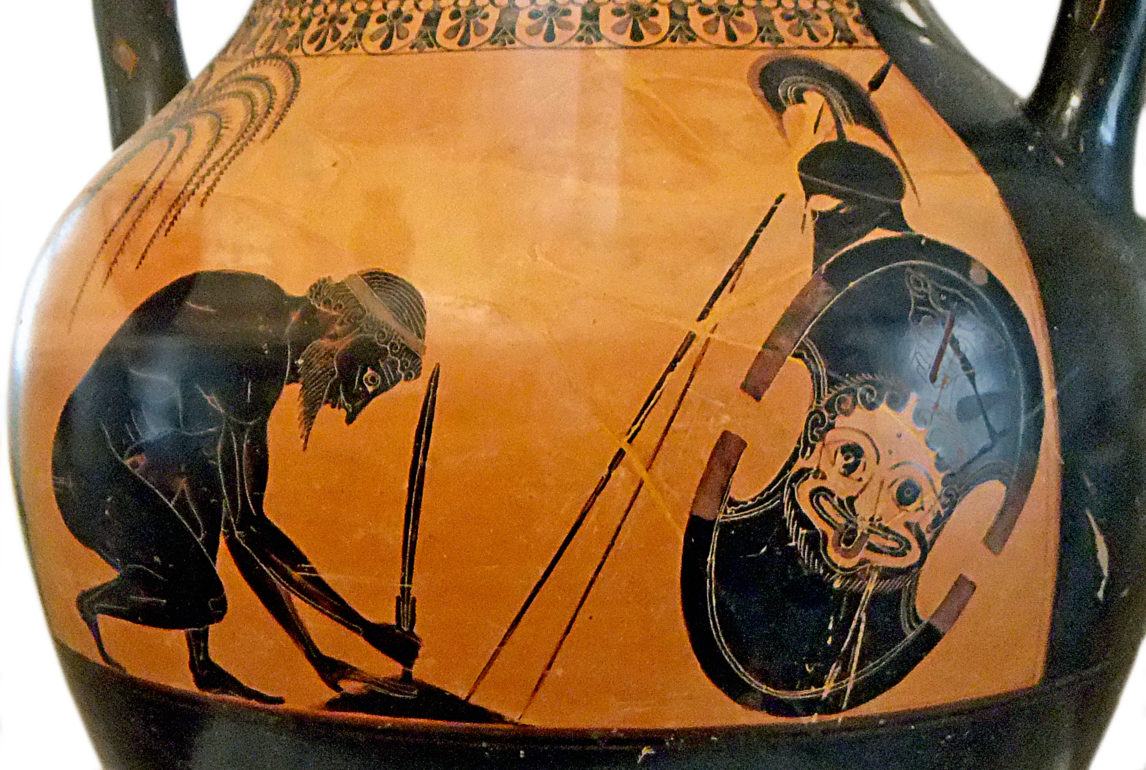
Media Attributions
Media Attributions
- C Painter Terracotta Kylix: Siana Cup (drinking cup) ca. 575 B.C. © the Metropolitan Museum is licensed under a Public Domain license
- Terracotta pelike (jar) © the Metropolitan Museum is licensed under a Public Domain license
- Gorgoneion Syrakus © Rabax63 is licensed under a CC BY-SA (Attribution ShareAlike) license
- Polyphemus Amphora (Sarah Murray) © Sarah Murray is licensed under a CC BY-SA (Attribution ShareAlike) license
- Gorgones Cdm Paris 277 © Jastrow is licensed under a Public Domain license
- Dinos Gorgon Painter Louvre E874 © Bibi Saint-Pol is licensed under a Public Domain license
- Borchia per portale a forma di testa di medusa, da pompei © Sailko is licensed under a CC BY-SA (Attribution ShareAlike) license
- Museu d’Història de València, detall del mosaic de la Medusa © JoanBanjo is licensed under a CC BY-SA (Attribution ShareAlike) license
- Perseus Medusa Louvre CA795 © Marie-Lan Nguyen is licensed under a Public Domain license
- Perseus killing Medusa © Jarba is licensed under a Public Domain license
- Cypriot Limestone Sarcophagus ca. 475–450 B.C. © the Metropolitan Museum is licensed under a Public Domain license
- Placa de terracota amb relleu de Perseu i Gògona, exposició La Bellesa del Cos © JoanBanjo is licensed under a CC BY-SA (Attribution ShareAlike) license
- Diosphos Painter Terracotta lekythos (oil flask) ca. 500 B.C. © the Metropolitan Museum is licensed under a Public Domain license
- Ergotimos Terracotta Stand ca. 570 B.C. © the Metropolitan Museum is licensed under a Public Domain license
- Denier Rep Romaine Plautius Plancus avers Gallica 7615 is licensed under a Public Domain license
- OlympiaGorgo is licensed under a Public Domain license
- Gorgon from Hekatonpedos, 570 BC, ACMA, Acr 701, 190723 © Zde is licensed under a CC BY-SA (Attribution ShareAlike) license
- Kylix Theseus Aison MNA Inv11365 n1 (Atenea) © Marie-Lan Nguyen is licensed under a CC BY (Attribution) license
- Akhilleus Memnon Staatliche Antikensammlungen 1410 © Bibi Saint-Pol is licensed under a Public Domain license
- Exekias Suicide d Ajax 01 glare reduced white bg © Ptyx is licensed under a CC BY-SA (Attribution ShareAlike) license
A primordial sea god. Father of many deities and monsters, including the Gorgons and the Graeae.
A primordial sea goddess. Mother of many monsters including the Gorgons, the Graeae, and Echidna.
Featured in chapter 20. Also appears in chapter 1.
Three sisters (Enyo, Deino, and Pemphredo), daughters of Phorcus and Ceto. Known for sharing one eye and one tooth between the three of them, and for aiding Perseus on his quest for Medusa's head.
Featured in chapter 21.
Three women with snakes for hair, named Stheno, Euryale, and Medusa. The singular ("Gorgon" or "Gorgo") may also be used as a proper noun referring to Medusa alone.
Featured in chapter 20 and chapter 21.
Called Oceanus or Ocean.
The river encircling the earth or its personification as a Titan. Husband of Tethys and father of the Oceanids.
Called Hesperides of Antlantides.
Nymphs of the evening, daughters of Atlas, and guardians of the Garden of the Hesperides, where golden apples grow.
Featured in chapter 17.
Greek: Poseidon
Roman: Neptune
God of the sea.
See chapter 7.
A hero from Argos, and son of Zeus and Danae. Known for beheading the Gorgon Medusa.
See chapter 21.
A man with a golden sword. Son of Medusa and Poseidon, brother of Pegasus, and father of Geryon. Known for being born from Medusa's neck when she was beheaded.
Featured in chapter 21.
A winged horse, child of Medusa and Poseidon, and sibling of Chrysaor. Known for being born from Medusa's neck when she was beheaded, and for being tamed by Bellerophon.
Featured in chapter 21.
Greek: Athena
Roman: Minerva
Goddess of warfare, wisdom, and craft.
See chapter 9.
Greek: Zeus
Roman: Jupiter or Jove
God of the sky, ruler of the Olympian gods.
See chapter 5.
A protective object carried by Zeus or Athena, interpreted either as a shield or an animal skin.
Featured in chapter 9 and chapter 20.
A Lapith seer and Argonaut. In some accounts, participated in the Calydonian Boar Hunt.
Appears in chapter 20.
Greek: Hades
Roman: Pluto
God of the underworld. Hades may also refer to the underworld itself, the kingdom of Hades.
See chapter 42.
Epithet for Apollo (see chapter 12), or a type of hymn to Apollo.
A princess and enchantress of Colchis, daughter of Aeëtes, and wife of Jason and later of Aegeus.
See chapter 19. Also featured in chapter 18 and chapter 22.
A king of Iolcus, brother of Pelias and father of Jason.
Featured in chapter 18 and chapter 19.
A princess of Ethiopia, daughter of Cepheus and Cassiopeia. Known for being rescued from a sea serpent by Perseus.
Featured in chapter 21. Also appears in chapter 20.
Minor nature deities.

